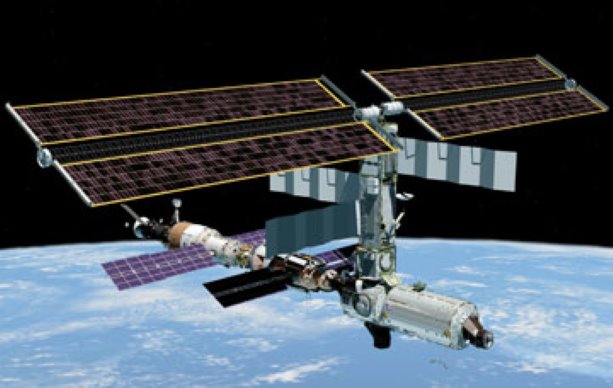One of Canada’s most expensive and ambitious construction projects isn’t even completed, but already plans are in place for its eventual demolition. Salvage crews would probably covet the structure’s cache of more than 225,000 kilograms of high-tech aluminum and titanium alloys, but they’re not likely to get a hold of them at almost 350 kilometres above the Earth’s surface.
One of Canada’s most expensive and ambitious construction projects isn’t even completed, but already plans are in place for its eventual demolition. Salvage crews would probably covet the structure’s cache of more than 225,000 kilograms of high-tech aluminum and titanium alloys, but they’re not likely to get a hold of them at almost 350 kilometres above the Earth’s surface.
The International Space Station (ISS) began construction in 1998 with an expected completion date in 2011. The Canadian Space Agency is just one of the international partners in the project, which has an estimated price tag of between US$35 billion and US$100 billion, depending on whether the project is priced over the full extent of its operation, or just part of it. So why are we already talking about its demolition? Simply put, what comes up will eventually come down, and the ISS needs a plan in place to guide the station to re-enter the Earth’s atmosphere in a controlled fashion, so that most of the facility either burns up or drops harmlessly into empty stretches of ocean.
Canadian-based robotics manufacturer MDA Corporation — the same company responsible for the Canadarm and Dextre space robot — is the company developing and manufacturing the antenna that will transmit the final command to the ISS.
“The antennas that we make are the primary data and voice antennas for the ISS,” says Bob Barrette, Program Manager for Space Station Support Programs with MDA. “Bear in mind that the antenna acts only as a transmitting and receiving device for remote controlled commands, but it has to be a particularly reliable device. When the space station is decommissioned it will be de-orbited as with the previous Russian space stations and dumped in the Pacific.”
The ISS will be supplied with three antenna units at a time, with two in operation and a third kept as a spare. Barrette says the units, built under contract to Boeing, are designed to last at least 10 years in the space environment and undergo rigorous testing in thermal and vacuum chambers and under heavy radiation conditions here on Earth. “It’s tested at levels way beyond the levels it’s intended to work in,” he says.
Although the ISS program is scheduled to terminate in 2016, that’s a bureaucratic timeline and not a functional limit for the facility.
“It’s up to all of the space agencies and the governments of the countries involved as to whether the ISS will operate to 2020 or beyond,” says Pierre Jean, Director, Operations Engineering and Program Manager for the Canadian Space Station Program. “The life of the space station can be seen as indefinite if there’s a political will to continue. It’s not the decision of a single country. One needs only to add or replace various modules and units to continue maintaining and upgrading it.”
When the ISS becomes truly obsolete, one of the vehicles delivering cargo to the station will remain behind to provide the propulsion that will de-orbit the craft. A signal sent from Earth through the MDA antenna will begin that process.
“It will be a completely controlled descent, with no risk of an inadvertent incident,” says Jean. “The metal is designed to be light, yet strong, and it will certainly have the propensity to burn when it reaches the atmosphere.”
Jean says that the descent will be well advertised weeks in advance and be visible from Earth. High-flying aircraft will record and monitor the spacecraft’s demolition.
“When it finally reaches the end of its service life, it will be a sad moment,” says Jean. “It’s difficult to imagine with all of our visions of the exploration of space.”











Recent Comments
comments for this post are closed